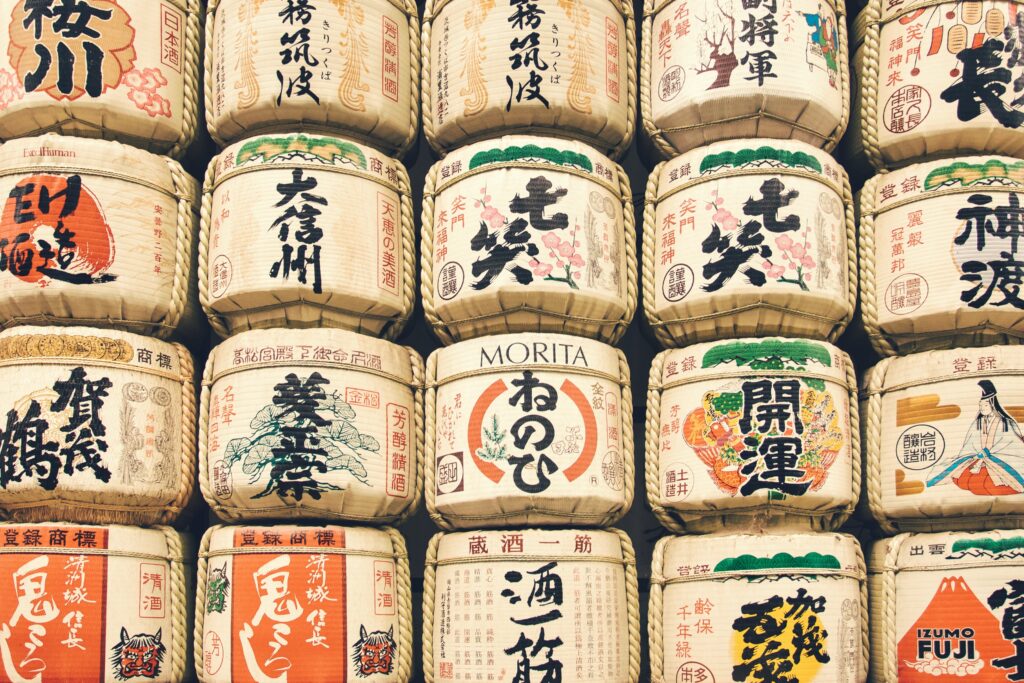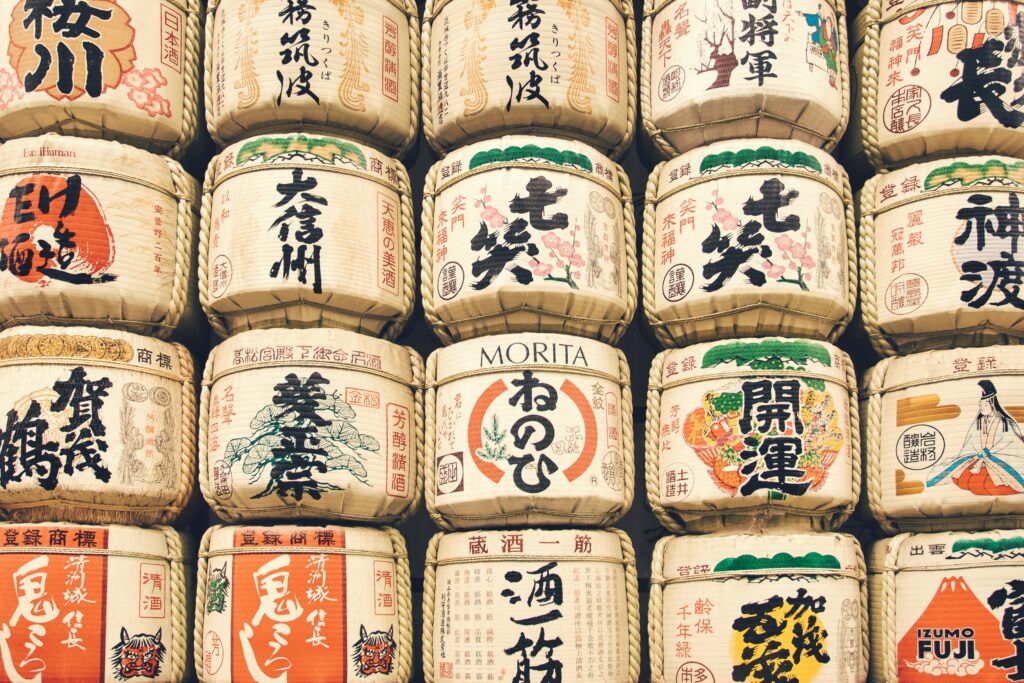[:it]Sake: production and the four necessary ingredients[:]

[:en]
After a first in-depth chapter on sake discussed with the founder of Sake Company and Italian head of the Sake Sommelier Association Lorenzo Ferraboschi, it is with him that we go into further depth on this Japanese fermented rice product with a thousand facets, exploring some interesting aspects of its production.
Sake and the key stages of production
Sake is an alcoholic drink obtained from the fermentation of rice in all prefectures of Japan, but also in other parts of the world. It is produced following a process of 8 total steps:
- Husking of rice, in which the grain is smoothed with special machinery to reduce fats, proteins and minerals, until the necessary percentage of remaining rice is obtained
- Preparation of the rice, which is first washed carefully, then soaked and finally steamed
- Addition of koji, a mushroom (Aspergillus oryzae) which is sprinkled on part of the parboiled rice and allows the saccharification of the starch
- Preparation of shubo, step in which the saccharified rice is mixed together with water, yeast, lactic acids (optional) and blanched rice, creating the so-called "mother of sake" or shubo
- Fermentation, which takes place starting from the shubo in tanks kept at a controlled temperature for a period ranging from 3 weeks to 30-35 days, depends on the type of sake we are producing
- Pressing, called Shibori, which is used to separate the solid part, made up of fermented rice, from the liquid part
- (possible) addition of alcohol
- Filtering and pasteurization, phases carried out to preserve the quality of sake over time
- Bottling, unanticipated passage from aging or maturation

Table sake and for special occasions
As with wine, there is also an infinite range of types for sake, characterized by decidedly different aromatic notes. Generally, table sake and aromatic sake can be distinguished. The former are the result of less important processing on the grain and are perfect throughout the meal to support food - the aromas of the drink must not constitute any obstacle in the pairing - while the latter are obtained from greater processing (less husking and greater fermentation time), which is why they are more expensive and more suitable for special occasions and for occasional consumption. Despite this premise, it is important to underline that the former (primarily represented by futsushu sake) are of extreme quality. Futsushu are in fact the best sake that Sakagura produces at the most 'correct' price. They are usually sold only in the neighboring area, while premium ones tend to be preferred for export all over the world. Futsushu are often the result of excellent quality sake blends left in the sakagura. They represent the 68-70% produced in Japan, they do not have a real specification and, for producers, they are not allowed to indicate the degree of husking on the label.
Rice gives it body, water gives it sex and yeast gives it style
Sake producers use this motto to mean the presence of a complex process behind the final result, in which each factor is capable of influencing the final result to a small extent. The koji gives it sugar, therefore energy, the rice gives it more or less structure or body – with an edible rice you get a lighter structure – the water makes the sake spicier and stronger if mineral and rich in limestone and more elegant and less angular if poor in minerals and the yeasts give it the style, which can be floral, with notes of caramel, banana, etc... Unlike wine, here not only the basic raw material, rice, matters, but a series of factors that make sake a decidedly more complex drink.

The types of rice
With around 250 different varieties, Japonica is the most cultivated type in Japan, separated into two macro-categories: Sakamai, i.e. the types of rice grown specifically for the production of sake, and Hanmai, i.e. table rice, less valuable but at the same time usable for the process. The first is edible and very similar to our Carnaroli while the second is low in starch, which makes it unsuitable for the production of sake. In this case a more structured and drinkable result is obtained, understood in the sense of body of the drink.
The water used
Sake is made from 80% water, and sakagura (sake cellars) are often located in areas famous for the purity of the spring water. In Japan, water is generally very light and even more so in the case of that suitable for sake, which is rich in potassium, sodium and magnesium, and low in iron and manganese. It is said that Miyamizu water originating from the area around Kyoto where sake was born, rich in minerals and giving a spicy final result, is more valuable also due to a legend. In the Edo era, a sake brewer had two sakagura, one in the Miyamizu spring and one a half day's walk away. In the Miyamizu source the sake was excellent and in the other sakagura not so good. He initially believed it was a problem with the curabito (the people involved in brewing sake), so he reversed them and didn't change anything. Then he reversed the rice and still nothing. Then he decided to bring the water with barrels (tari) and there he understood what was the element that made the difference. The water from the sakagura half a day's walk was very rich in iron and manganese, which gives the sake a very bitter taste and promotes rapid oxidation of the drink.

The koji
It is a fungal spore naturally present on rice plants, used by Japanese sakagura to obtain the saccharification of rice starches. In this phase the rice carbohydrates are split into simple sugars, which are fermentable. The specific spore used is Aspergillus oryzae sake and there are some organizations dedicated to its isolation. They are called kojijan, or koji makers.
The yeast
As in wine and beer, sake also contains a yeast (kobo) which is used to transform sugars into alcohol. Depending on the desired aromatic result, different species of yeast are used, selected over the years to optimize and improve the quality of sake fermentation. There are various types of yeasts, all numbered starting from 1910. They can be from the state, from the region, from trade associations, exclusive to a sakagura. There are also ones made with wine yeasts. In addition to CO2 and alcohol, yeast generates aromatic compounds, which characterize one bottle compared to another. All selected and numbered yeasts are able to resist the degree of acidity in which they find themselves fermenting.[:]
